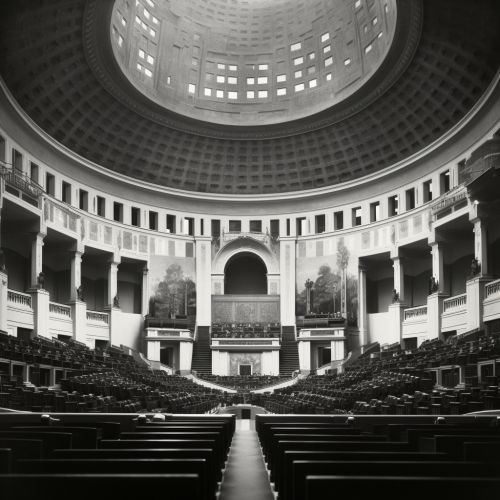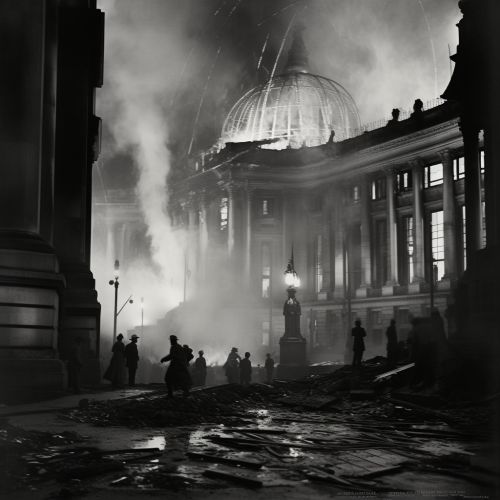Weimar Republic
Origins and Formation
The Weimar Republic, officially known as the German Reich, was established in 1919 in the aftermath of World War I. The republic was named after the city of Weimar, where the constitutional assembly took place. The Weimar Republic was formed following the abdication of Kaiser Wilhelm II, marking the end of the German Empire and the beginning of a democratic parliamentary system in Germany[1].


Political Structure and Constitution
The Weimar Republic was characterized by a democratic and parliamentary system. The Weimar Constitution was adopted on August 11, 1919, and it established a semi-presidential system where both the President and the Reichstag (Parliament) held significant power[2]. The President was elected by direct popular vote and held the power to appoint and dismiss the Chancellor and the Cabinet. The Reichstag was responsible for legislation and was elected by proportional representation.
Economic Challenges
The Weimar Republic faced significant economic challenges, including hyperinflation, unemployment, and the effects of the Treaty of Versailles. The Treaty of Versailles, signed in 1919, ended World War I and imposed heavy reparations on Germany, which had severe economic implications for the country[3].


Culture and Society
Despite the political and economic challenges, the Weimar Republic was a time of significant cultural and intellectual productivity. Known as the Golden Twenties, this period saw advancements in literature, art, music, and philosophy. The Bauhaus movement, which combined crafts and the fine arts, was founded during this time[4].


Rise of National Socialism and End of the Republic
The Weimar Republic ended with the rise of National Socialism and the appointment of Adolf Hitler as Chancellor in 1933. The Republic's final years were marked by increasing violence and political instability, culminating in the Enabling Act of 1933, which effectively ended democracy in Germany and marked the beginning of the Nazi era[5].


See Also
References
- ↑ Peukert, Detlev J.K. (1992). The Weimar Republic: The Crisis of Classical Modernity. New York: Hill and Wang.
- ↑ Evans, Richard J. (2003). The Coming of the Third Reich. New York: Penguin Press.
- ↑ Keynes, John Maynard (1920). The Economic Consequences of the Peace. New York: Harcourt, Brace and Howe.
- ↑ Whitford, Frank (1984). Bauhaus. London: Thames & Hudson.
- ↑ Shirer, William L. (1960). The Rise and Fall of the Third Reich. New York: Simon & Schuster.
